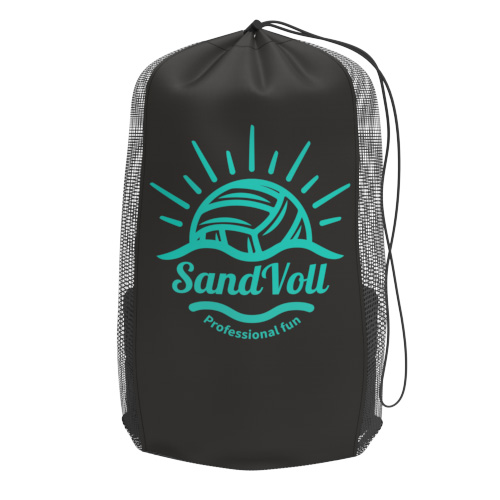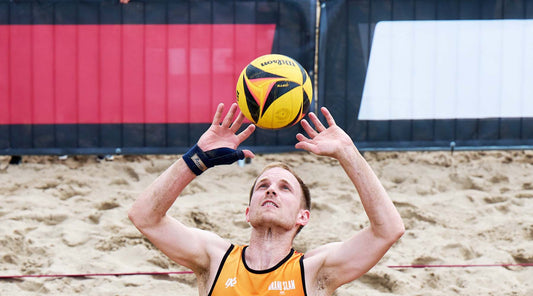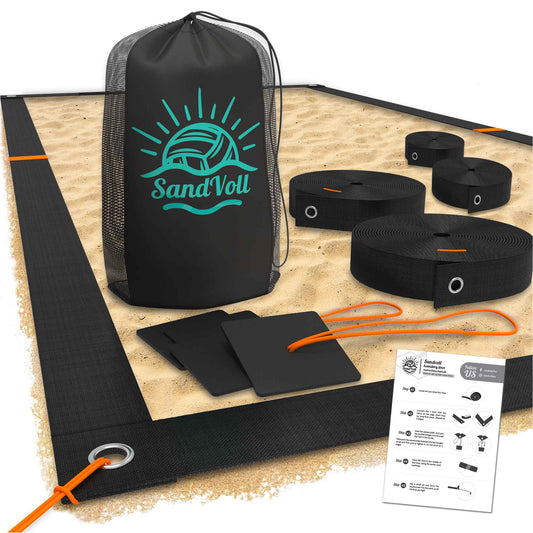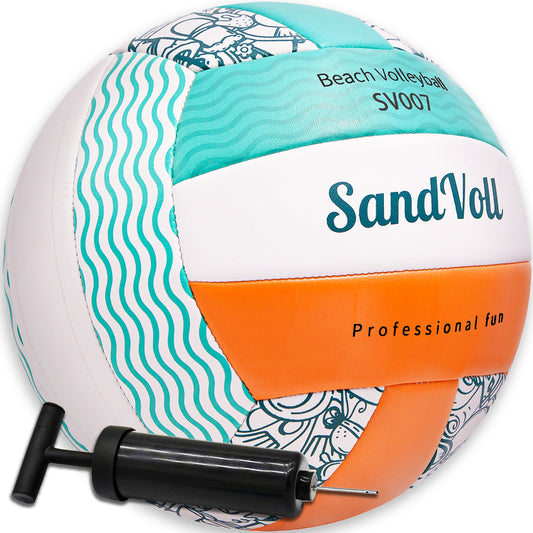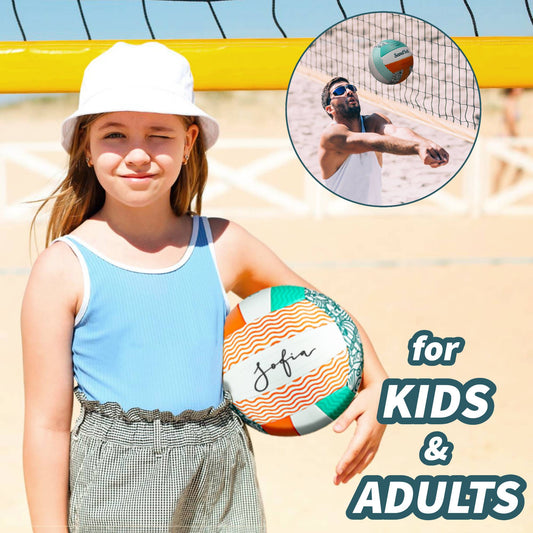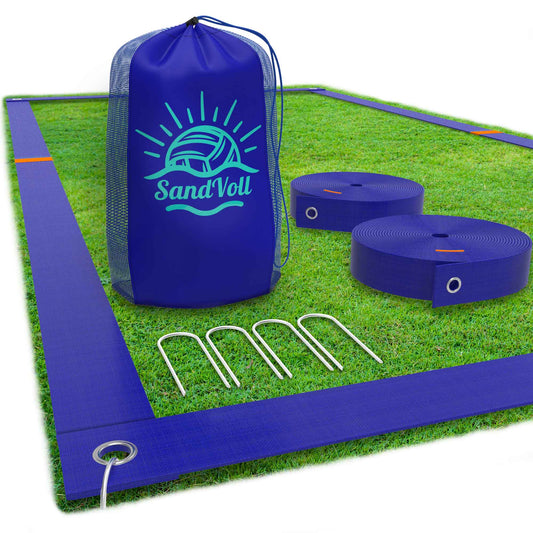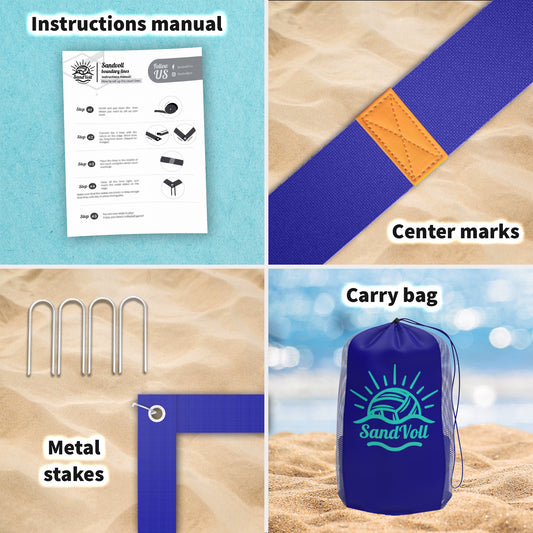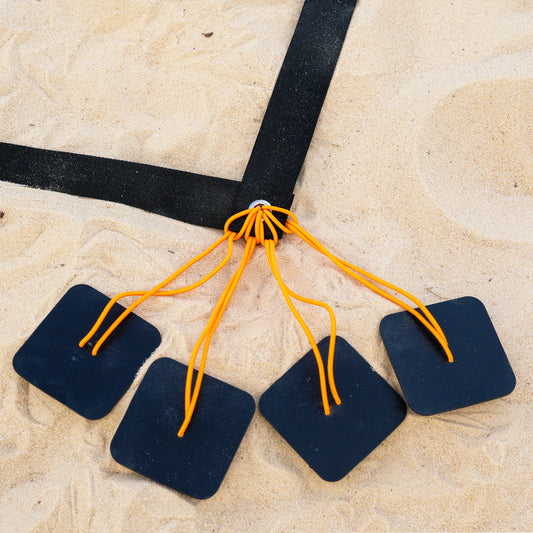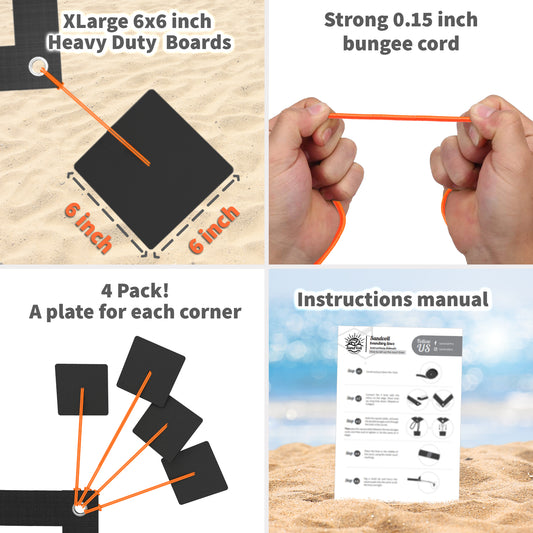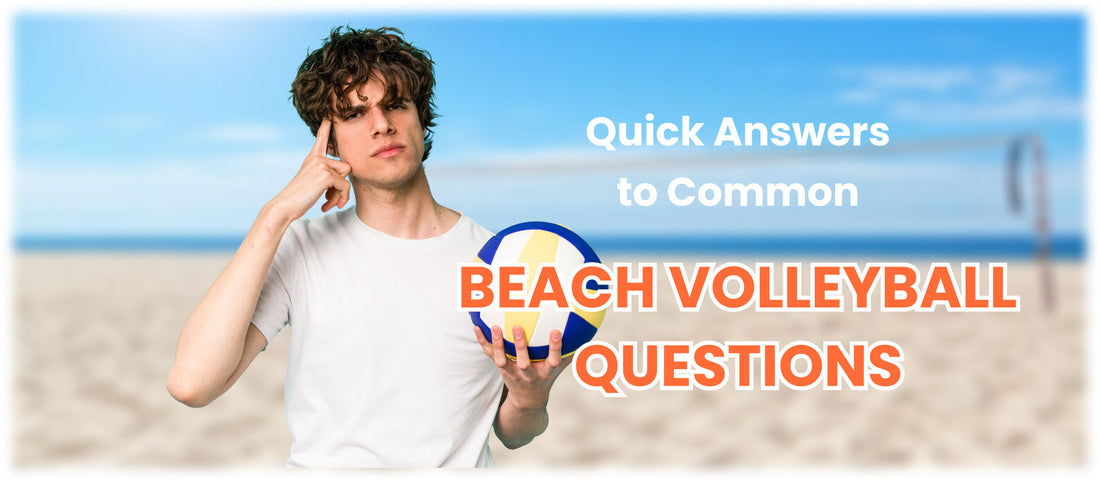
Beach Volleyball 101: Quick Answers to Common Beach Volleyball Questions
Share
This post is a guide for answering common questions which we found over the internet, about beach volleyball, with quick and simple explanations. Whether you're a beginner or an experienced player, this post will provide you the answers you need for your questions about the game. Let's dive in!
1. What is beach ball volleyball?
Beach volleyball is a two-player team sport played on a sand court with a net in the middle. The goal is to send the ball over the net and land it on the opponent's side while preventing them from doing the same. Each team can touch the ball up to three times before returning it.
Beach volleyball originated in Santa Monica, California, and has been an Olympic sport since 1996, governed by the FIVB (Fédération Internationale de Volleyball).
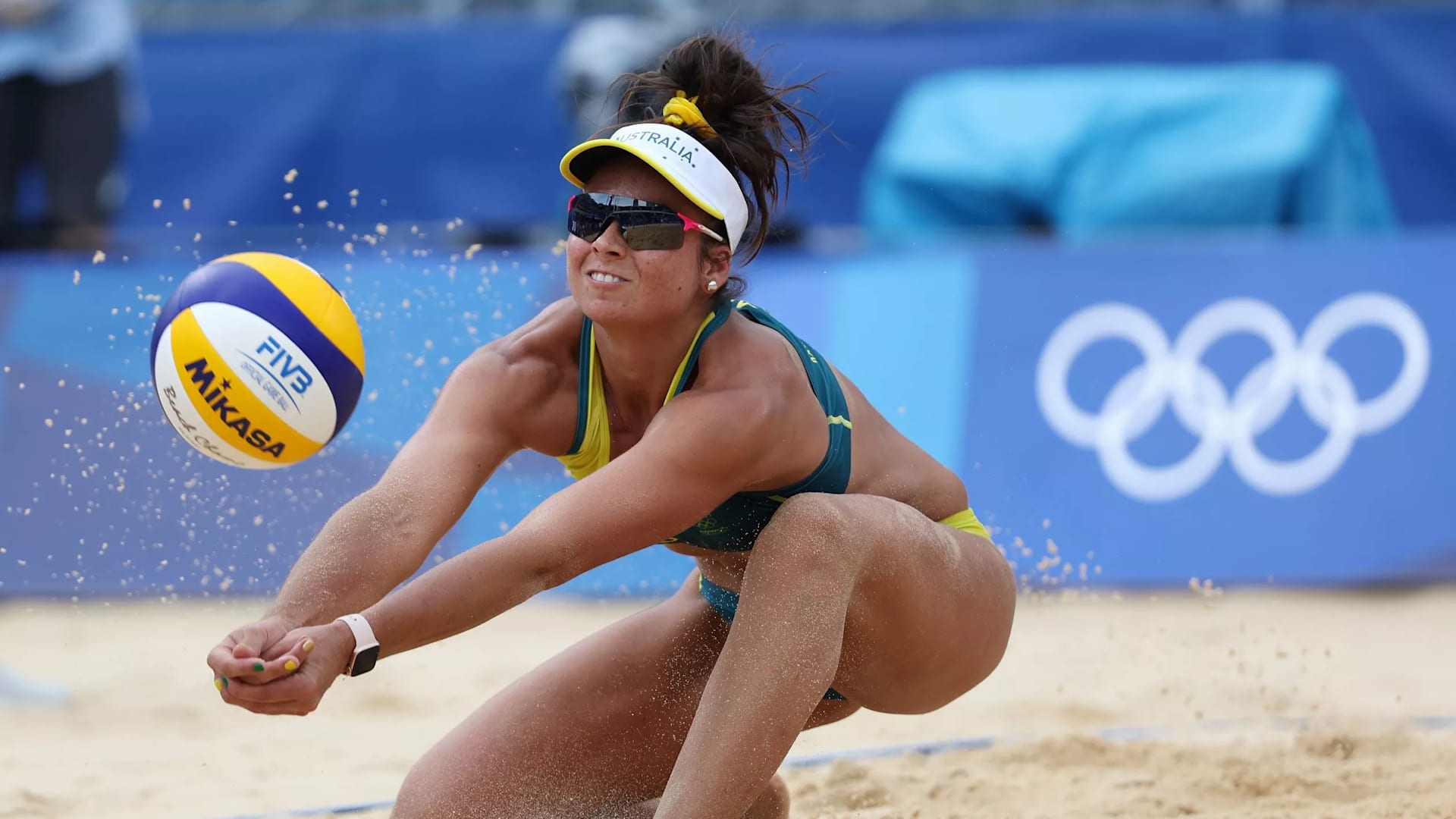
2. Why is beach volleyball only 2 players?
Beach volleyball is played with two players per team because of the smaller court size (52.5 x 26.25 feet) and the difficulty of moving on sand. Fewer players make the game more fast-paced and strategic, requiring both teammates to cover the entire court.
Historically, when beach volleyball first started, fewer players were available, making smaller teams more practical.

3. Is beach volleyball different from regular volleyball?
Yes! Here are the main differences between beach and indoor volleyball:
- Team Size: Indoor volleyball has 6 players per team, while beach volleyball has only 2.
- Court Size: Indoor courts are 60’ x 30’, while beach courts are 52’ x 26.25’ (smaller).
- Ball: Indoor volleyballs are heavier and smaller, while beach volleyballs are larger, lighter, and softer.
- Scoring: Indoor volleyball is played in best of 5 sets (to 25 points), while beach volleyball is best of 3 sets (to 21, with a tiebreaker set to 15).
- Weather Conditions: Beach volleyball is played outdoors, meaning wind and sun can impact the game.

4. What is harder beach volleyball or volleyball?
Beach volleyball is considered more physically demanding than indoor volleyball because:
- Playing on sand is harder – Players need more strength and endurance to move and jump.
- Only two players per team – Each player has to cover more court space and take on multiple roles.
- Weather conditions – Wind, heat, and sun make the game unpredictable and more challenging.
However, indoor volleyball requires stronger attacks, quicker reaction times, and precise teamwork, so both have their unique challenges.
You can also check this great video about the topic.

/cloudfront-us-east-2.images.arcpublishing.com/reuters/ZCMTODNQNVJLZK4DQQ4WNKWKDY.jpg)
5. Why are beach volleyball suits so small?
Beach volleyball uniforms are designed for maximum mobility, comfort, and performance in hot weather.
- Bikinis & shorts minimize sand retention, preventing discomfort during play.
- Lightweight, quick-drying materials keep players cool and allow for fast movement.
- Players have uniform flexibility – they can wear full-length attire if they choose.
The FIVB has inclusive uniform policies, allowing athletes to wear what they are most comfortable playing in.

6. Why does sand not stick to volleyball players?
Professional beach volleyball courts use special sand that is:
- Filtered to remove dust, pebbles, and shells.
- Rounded instead of sharp, preventing it from sticking to skin.
- Loose and aerated, so it doesn’t retain moisture.
Players also use towels during timeouts to brush off excess sand.

Visit our catalog to explore our range of beach volleyball equipment and start your beach volleyball journey today:
7. Why is beach volleyball so tiring?
Beach volleyball is exhausting because:
- The sand surface requires more energy – Moving and jumping is harder than on solid ground.
- Sun and heat add to fatigue – Playing under the sun increases exhaustion.
- More running per player – With only two players per team, there’s no time to rest.
To avoid exhaustion, hydrate properly, wear sun protection, and take breaks when needed.

8. Is sand volleyball better for knees?
Yes! Beach volleyball is easier on the knees because:
- Sand absorbs impact, reducing stress on joints.
- Less jumping strain compared to hard indoor courts.
- Lower injury rates for ACL tears and meniscus injuries.
However, playing barefoot on hot sand or without proper training can still cause injuries. Players should still take precautions to prevent overuse injuries and environmental injuries such as sunburn and dehydration.

9. Can you kick the ball in sand volleyball?
Yes! In beach volleyball, players are allowed to use any body part to hit the ball, including their feet. However, a kicked ball must be clean and not double-hit.

10. Can you spike in sand volleyball?
Absolutely! In fact, spiking is one of the most exciting moves in the game. It's when a player jumps and slams the ball into the opponent's court with power and precision.
It's a thrill to watch and even more thrilling to execute. Just make sure you don't accidentally spike your partner instead!

11. Do you wear shoes for sand volleyball?
No, beach volleyball players play barefoot for better movement and feel on the sand. However, when sand is too hot or cold, players wear sand socks for protection.
12. Why do beach volleyball players wear tape?
Players use kinesiology tape (KT Tape) to:
- Reduce muscle pain & inflammation.
- Support injured areas without restricting movement.
- Improve circulation and aid recovery.
You’ll often see tape on shoulders, knees, and backs to help prevent injury. Kinesio tape is a legal, non-invasive way to treat an injury, as it sticks for days, doesn't restrict movement, and allows the body to move through a full range of motion.
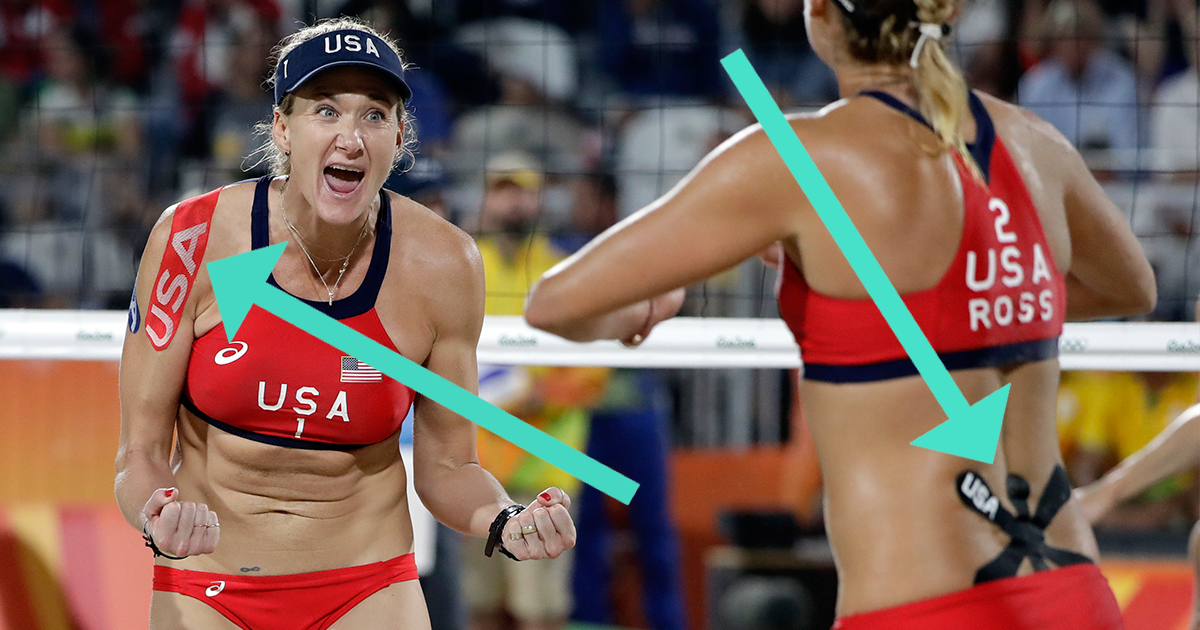
13. Do you wear socks for sand volleyball?
No, you don't have to. Sand volleyball is played barefoot, but players can wear sand socks to:
- Protect feet from hot sand.
- Prevent cuts from shells or rocks.
- Keep feet warm in colder temperatures.
Sand socks are optional but helpful for extreme weather conditions.

14. What is not allowed in beach volleyball?
In beach volleyball, players cannot:
- Exceed 3 touches per team before returning the ball.
- Hit the ball twice in succession (except after a block).
- Hold or lift the ball (must be a clean hit).
- Touch the net while making a play.
- Step under the net interfiring with the opposing team.
Beach volleyball is a fast-paced game that requires quick reflexes and teamwork to stay within these rules.

Visit our catalog to explore our range of beach volleyball equipment and start your beach volleyball journey today.
15. Is there a dress code for beach volleyball?
Yes, but it’s flexible. In professional tournaments, players must wear matching uniforms within these guidelines:
- Men – Tank tops & shorts.
- Women – Bikinis, one-piece suits, or shorts and t-shirts.
- In cold weather, players can wear long sleeves, leggings, or compression gear.
Players are free to choose what makes them most comfortable.

16. How long is a game of beach volleyball?
Beach volleyball matches typically last 30 minutes to an hour, depending on:
- How close the sets are.
- Weather conditions affecting rallies.
- Player fatigue and timeouts.
The first two sets are played up to 21 points, and if there's a tie, a tie-breaker set is played up to 15 points to decide the winner.
17. Can you jump serve in beach volleyball?
Yes! Jump serves are common in beach volleyball and add extra power and spin to a serve. However, sand makes it harder to jump and balance, so mastering it takes practice.
Jump serves are a powerful weapon in beach volleyball, but they require:
- A strong toss.
- A well-timed jump.
- Good balance on sand.
Jump serves add power and spin, making it harder for opponents to return.
A jump serve is when the ball is tossed higher than a regular serve and the player jumps to hit the ball over the net.
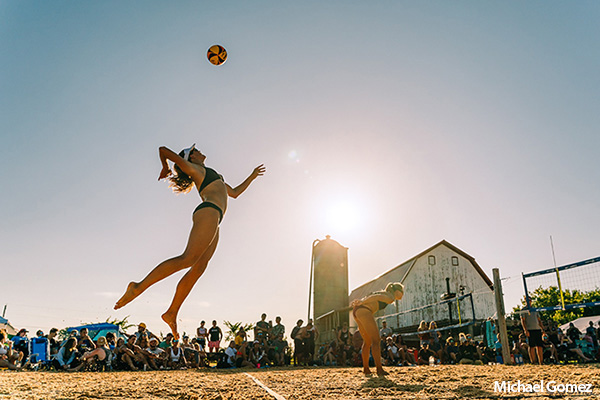
18. What are the basic rules of beach volleyball?
The key rules are:
- Each team has 2 players (no substitutes).
- You can only touch the ball 3 times per side.
- Can't hit the ball twice in succession.
- No lifting or catching the ball.
- DONT touch the net.
- Matches are best of 3 sets (first to 21 points, tiebreaker to 15).
- The teams switch sides every 7 points.
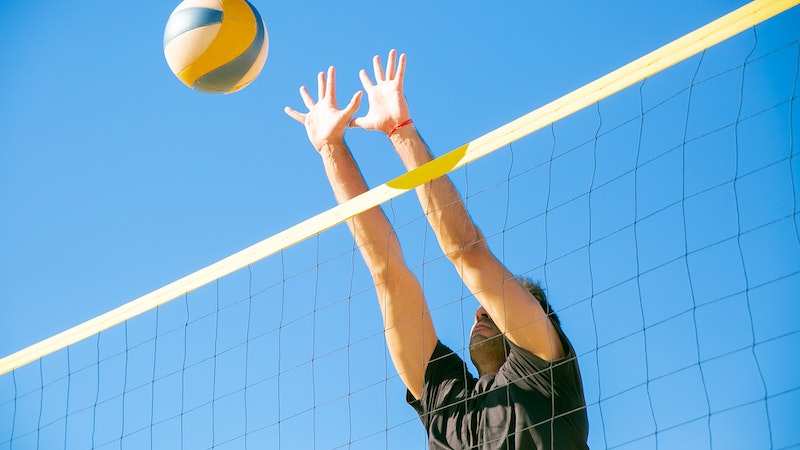
19. Do beach volleyball players get paid?
Yes! Professional beach volleyball players earn money through:
- Tournament prize money (FIVB, AVP, Olympics, etc.).
- Sponsorships and endorsements.
- Coaching, training camps, and social media content.
The highest-paid players make six-figure incomes, while lower-ranked players may rely more on sponsorships.
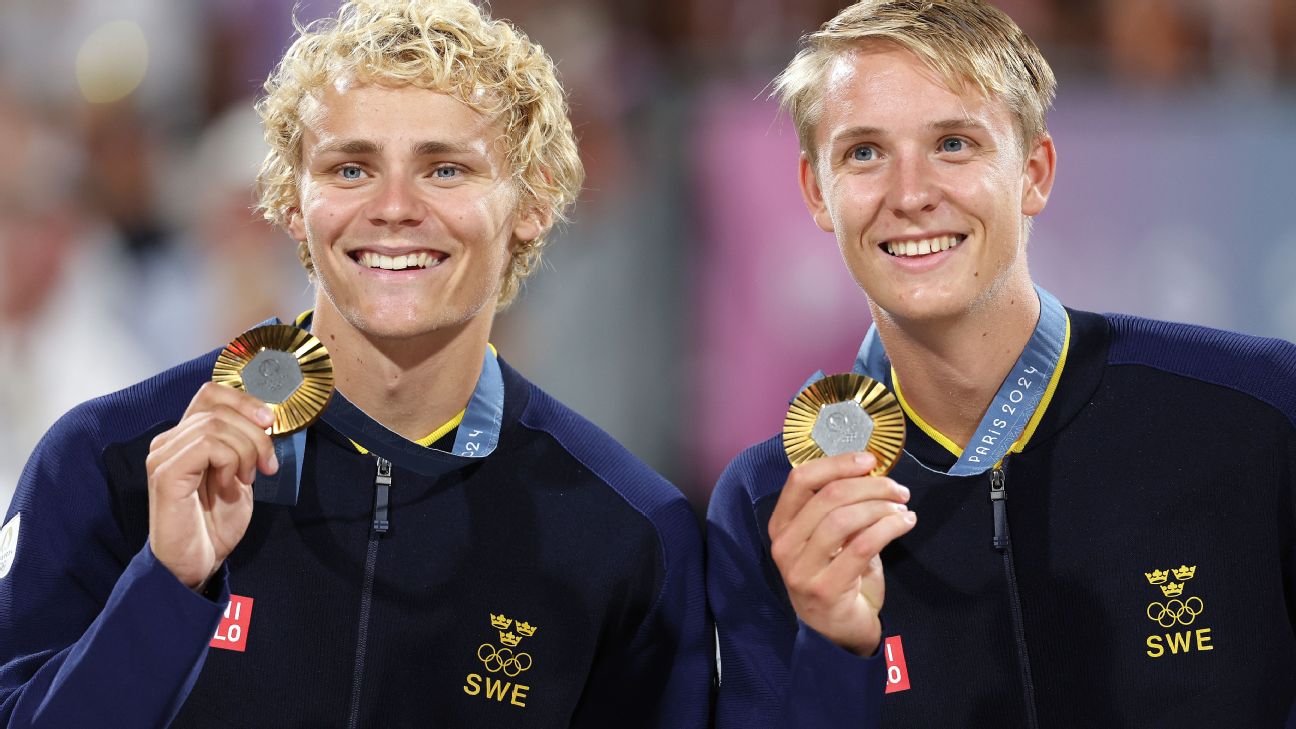
20. How many sets in a beach volleyball game?
A beach volleyball match is played in a best-of-three format:
- First two sets – Played to 21 points.
- Third set (if needed) – Played to 15 points.
- Win by two rule – A team must win each set by at least two points.

21. Do you have to win by 2 points in beach volleyball?
A team must win by at least two points. For example, if the score reaches 20-20 (or 14-14 in a tiebreaker set), play continues until one team leads by two points (e.g., 22-20 or 16-14).
25. How do you spike in beach volleyball?
To spike in beach volleyball:
- Take a few steps toward the net to build momentum.
- Jump off one foot for maximum height.
- Use your dominant hand to strike the ball at the highest point.
- Aim for open court space or angle your hit downward.
Spiking on sand is harder due to the unstable surface, so leg strength and timing are key.
Check out this great video on how to hit a ball:
Want to Play Beach Volleyball? Get the Right Gear!
Now that you know more about beach volleyball, why not hit the sand with the right equipment?
Visit our catalog to explore our range of beach volleyball equipment and start your beach volleyball journey today.
